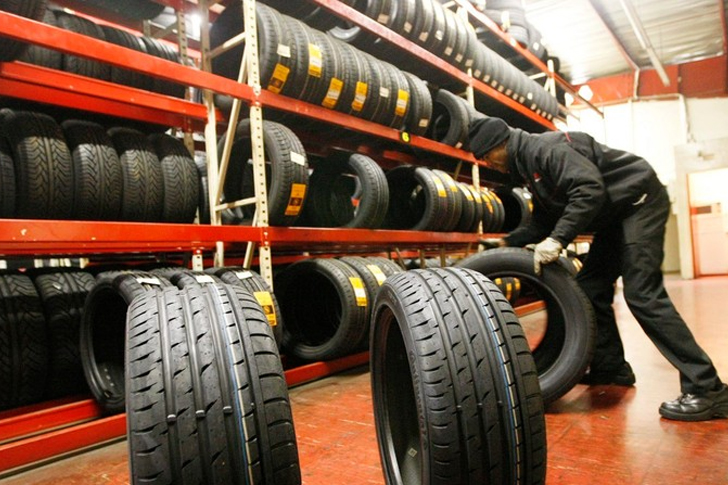Guide to Locating Four New Tires
When it comes time to replace the tires on your vehicle, choosing the right set can be an overwhelming task given the vast number of options available. However, this decision is crucial not only for ensuring your car operates safely but also for maintaining its efficiency and performance. This guide will take you through the process of locating four new tires, providing essential tips and pointing out what to consider to make an informed choice.

Understanding Tire Basics
Before diving into the purchase, it’s important to understand the basics of tire types and what each offers. Mainly, tires are classified into all-season, summer, and winter categories, each designed to perform optimally in specific weather conditions and temperatures. All-season tires are the most versatile, offering reasonable performance in wet and dry conditions, as well as in moderate snow. Summer tires provide excellent dry and wet traction but are not suitable for cold weather or snow. Winter tires are specifically designed to excel in severe snowy and icy conditions, offering superior grip when temperatures drop.
Assessing Your Needs
The first step in finding the right tires is assessing your driving needs. Consider the climate in your area as well as the terrain. This assessment will guide you in choosing between all-season, summer, or winter tires. Moreover, think about your driving habits – do you frequently drive off-road, or are you mainly navigating city streets? Are high-performance tires necessary for your car, or would touring tires, which emphasize comfort and longevity, be better suited?
Checking Tire Size and Specifications
Your vehicle’s owner’s manual and the sidewall of your current tires will detail the size and other specifications. Tire size is denoted by a series of numbers and letters that indicate the tire’s width, aspect ratio, and diameter. For instance, a tire marked 225/50R16 has a width of 225mm, an aspect ratio of 50%, and fits on a 16-inch wheel. It’s vital to stick to the manufacturer’s recommendations to ensure safety and optimal performance of your vehicle.
Researching Brands and Models
With your tire type and size in hand, the next step is comparing different brands and models. Look for tires that have good reviews in terms of longevity, comfort, and fuel efficiency. Consumer Reports and Tire Rack are valuable resources offering detailed reviews and comparisons. Average prices for a standard all-season tire range from $50 to $200 each, depending on the brand and model. It’s worth investing in higher-quality tires as they are likely to offer better performance and longer tire life.
Considering the Tire’s Performance and Safety Features
Key performance features to consider include tread life, stopping distance, and handling. A tire’s tread life indicates how long it can be expected to last before replacement. Premium brands might offer tires that promise extended tread life, sometimes up to 90,000 miles. However, longer tread life can sometimes compromise on performance, particularly on wet roads. Safety features like hydroplaning resistance and enhanced grip can significantly affect your vehicle’s handling and safety in adverse conditions.
Where to Buy Tires
There are numerous options for purchasing tires: directly from a dealership, at tire specialty chains, or online. Each has its pros and cons. Dealerships are typically more expensive but might offer promotions or tire packages that include ongoing maintenance. Tire specialty chains often have a wide range of tires at different price points and may provide better customer service in terms of helping you select the right tire. Online retailers often have the best prices and can send the tires directly to a local garage where they can be fitted, though this option requires a bit more coordination on the part of the car owner.
Scheduling an Installation
Once you have purchased your new tires, the final step is getting them properly installed on your vehicle. This involves not only fitting the tires but also balancing and aligning them, which is crucial to ensure even wear and optimal performance. Many tire stores offer installation services with lifetime maintenance including regular rotations and balance checks, which can prolong the life of the tires and enhance your vehicle’s handling.
Conclusion
Choosing the right set of tires is a critical decision for any car owner, affecting the safety, performance, and efficiency of the vehicle. By understanding the types of tires available, assessing your own needs, and considering various performance and safety features, you can make a well-informed decision. Remember to consult reliable sources and take into account consumer reviews when selecting a brand. Proper installation and regular maintenance will ensure your new tires carry you safely for many miles to come.
This guide should provide a solid foundation for selecting four new tires, ensuring you can drive with confidence regardless of the conditions you face on the road. Remember to invest wisely; quality tires are not just a purchase, they’re an investment in your safety and your vehicle’s longevity.







Recent Comments